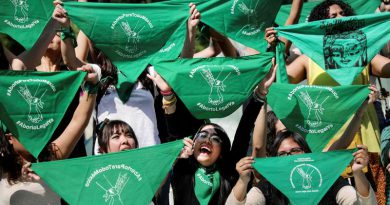Pentagon says Iranian commander Soleimani was developing plans to attack Americans
Washington (Reuters) – A U.S. strike killed Iran Quds Force chief Qassem Soleimani, the Pentagon said on Thursday, adding that Soleimani was actively developing plans to attack Americans in Iraq and the Middle East.
“At the direction of the President, the U.S. military has taken decisive defensive action to protect U.S. personnel abroad by killing Qassem Soleimani,” the Pentagon said in a statement.
“This strike was aimed at deterring future Iranian attack plans,” it said, adding that the United States would continue to take necessary action to protect Americans and interests around the world.
The Pentagon said that Soleimani had “orchestrated” attacks on coalition bases in Iraq over the past few months and approved the “attacks” on the U.S. embassy in Baghdad this week.
U.S. officials, speaking on the condition of anonymity, said that Soleimani had been killed in a drone strike in Baghdad.
One U.S. official said that Iraqi militia commander Abu Mahdi al-Muhandis was also believed to have been killed in the strike, according to initial information, though he was not the primary target.
The official said the Pentagon was aware of the possibility of an Iranian response and U.S. military officials were ready to defend themselves. The official did not rule out additional U.S. troops or military assets going to the region.
Democratic Senator Chris Murphy said while Soleimani was “an enemy of the United States,” the killing could put more Americans at risk.
“One reason we don’t generally (assassinate) foreign political officials is the belief that such action will get more, not less, Americans killed,” Murphy said on Twitter.
“That should be our real, pressing and grave worry tonight,” he said.
Former U.S. ambassador to the United Nations Nikki Haley said that Soleimani’s death “should be applauded by all who seek peace and justice.”
Earlier on Thursday, before the strike, U.S. Defense Secretary Mark Esper said there were indications Iran or forces it backs may be planning additional attacks, warning that the “game has changed” and it was possible the United States might have to take preemptive action to protect American lives.



